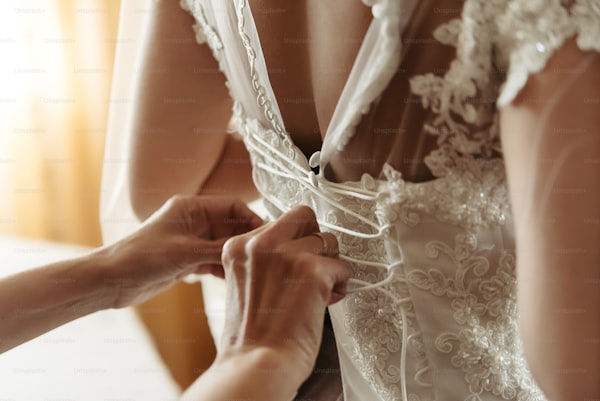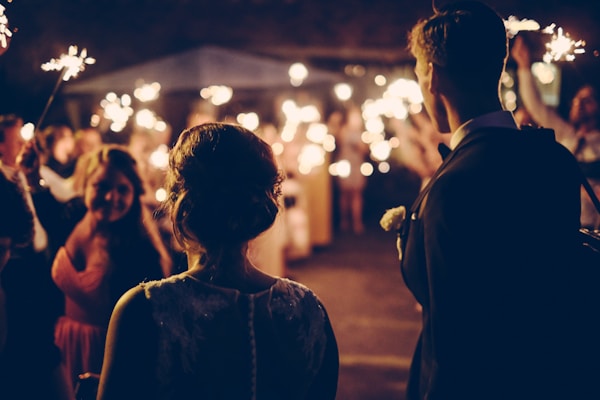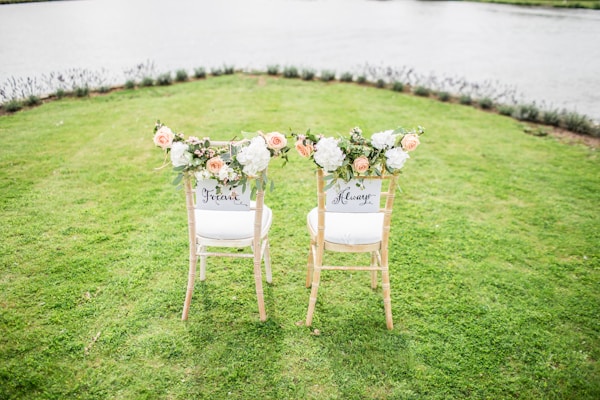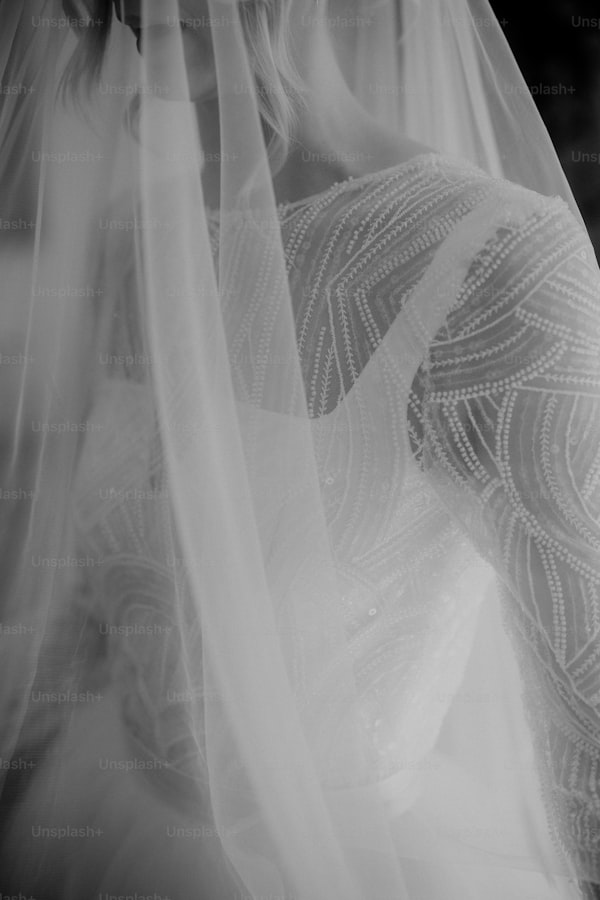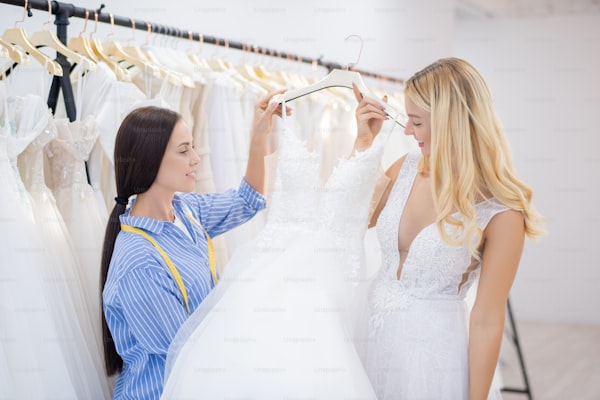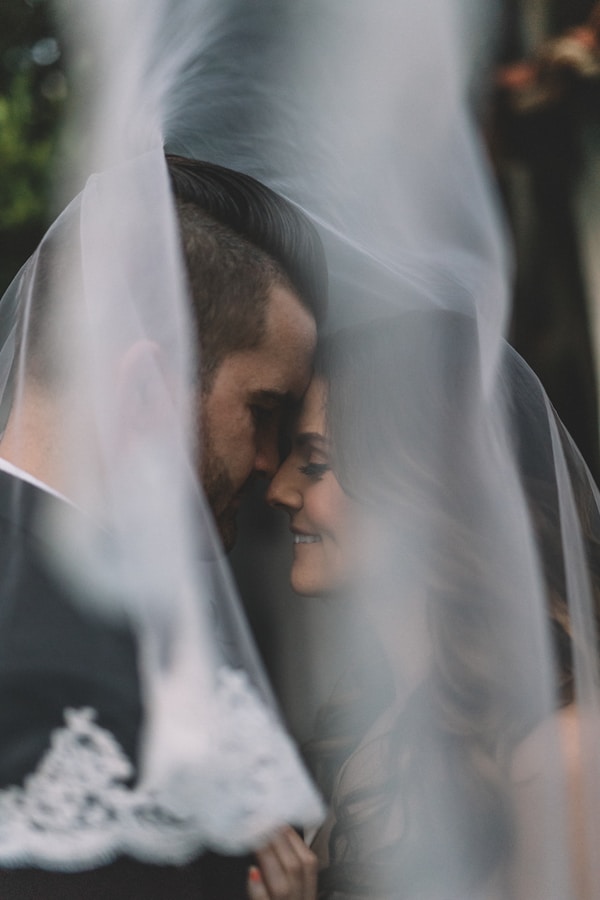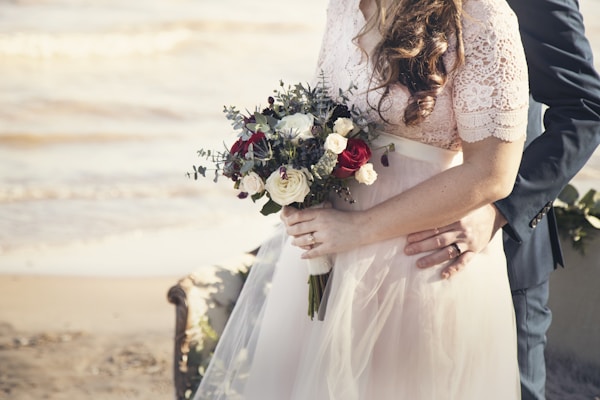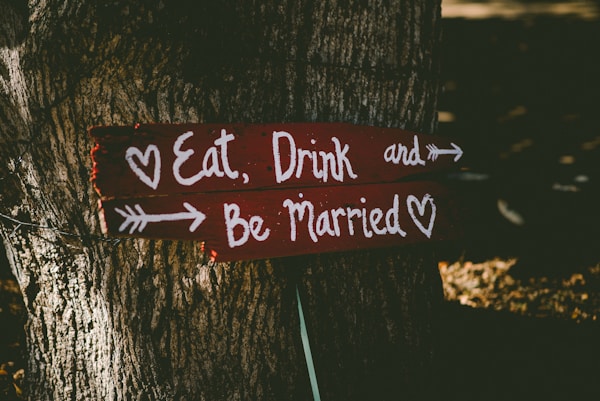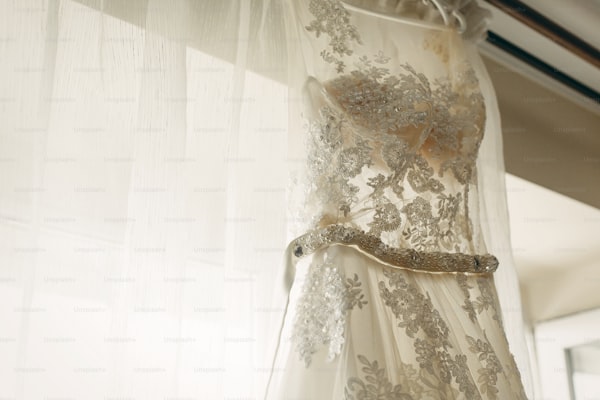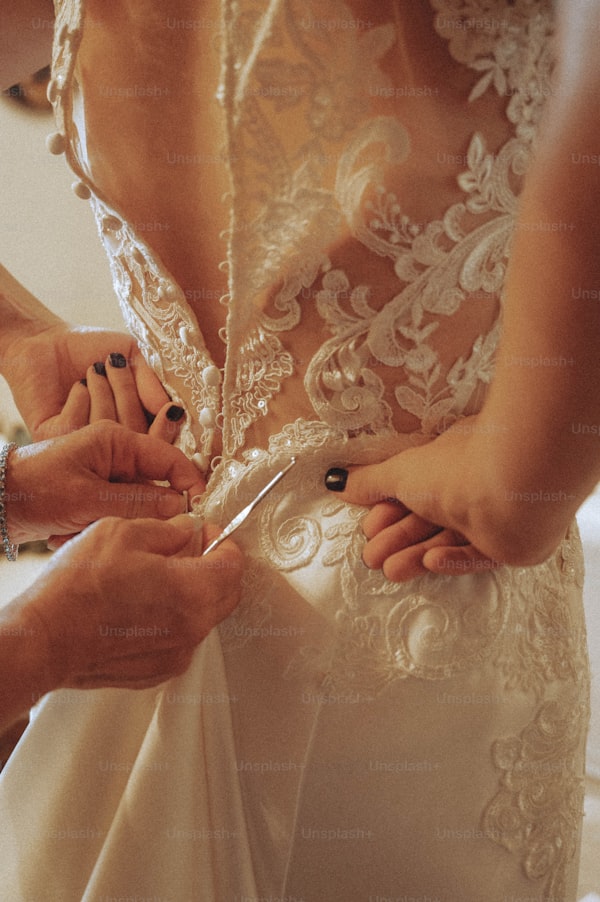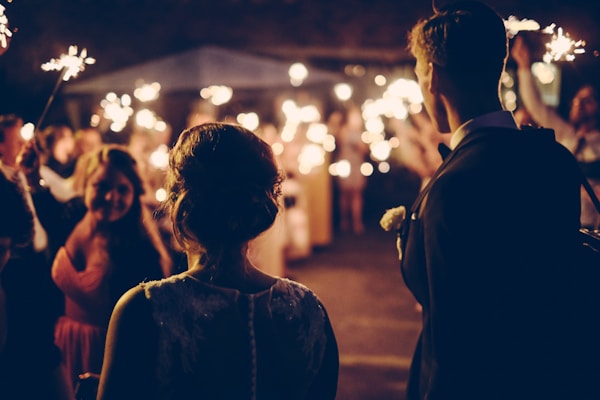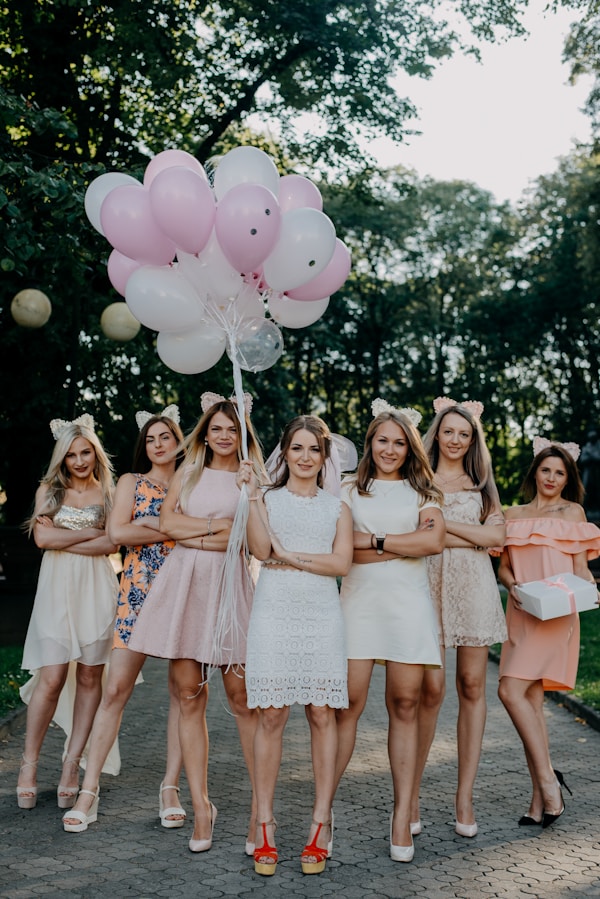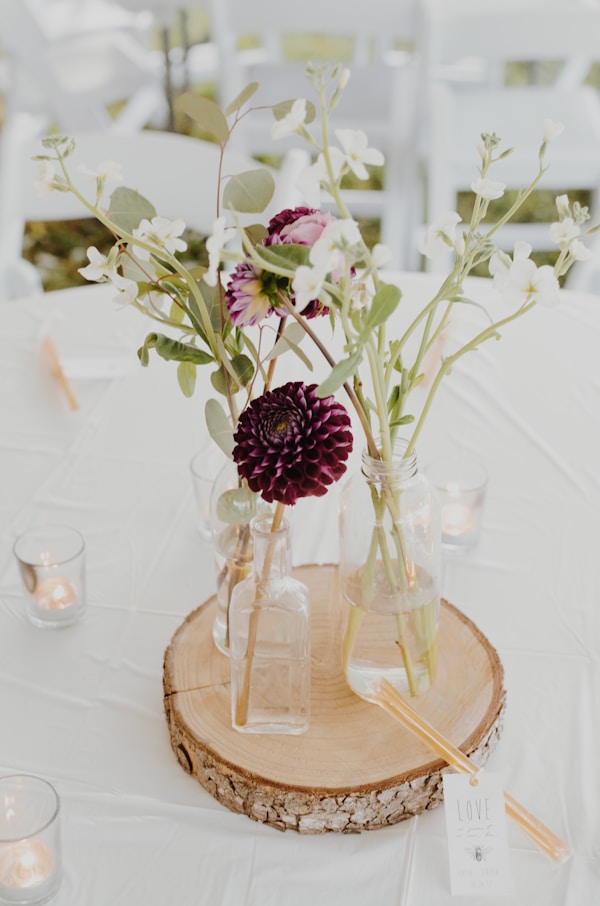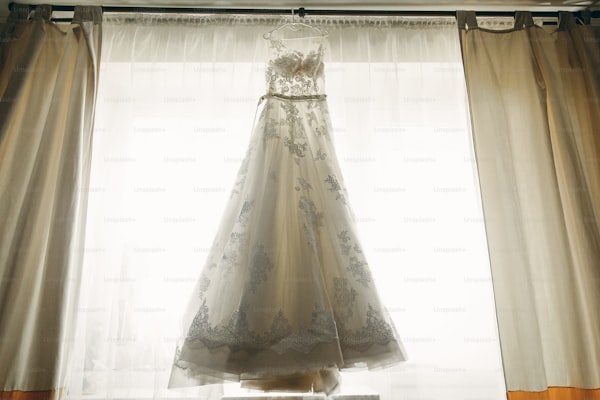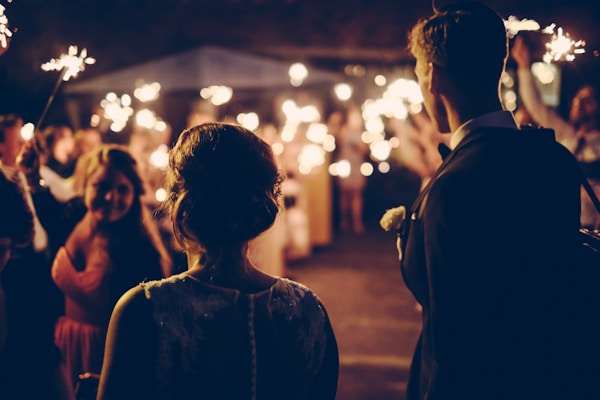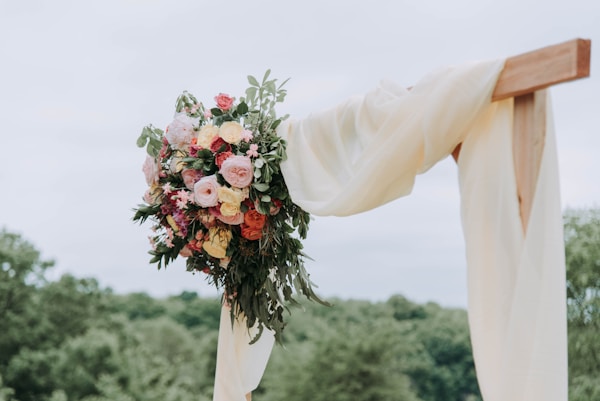Mastering the Art of Creating a Wedding Dress with a Fully Pleated Skirt: Best Practices
Introduction to Wedding Dresses with Fully Pleated SkirtsWhen it comes to wedding attire, the wedding dress holds a special place in the hearts of brides around the world. One design that has stood the test of time and remains a favorite is the wedding dress with a fully pleated skirt. The elegance and charm of pleats can add a stunning visual texture that enhances the overall aesthetic of the gown. In this article, we will explore the best practices for creating a wedding dress with a fully pleated skirt and other relevant considerations to ensure your special day is perfect.Understanding Pleats and Their Impact on Wedding DressesPleats are folds in the fabric that create volume and movement, which can beautifully enhance the silhouette of a wedding dress. By providing a structured yet flowing design, pleats can vary in size, depth, and alignment, ultimately affecting the dress's appearance.The Aesthetic Appeal of a Fully Pleated SkirtA fully pleated skirt can contribute to a bride's vision of romance and sophistication. Here's why this design choice is so appealing: Movement: The nature of pleats allows for graceful movement, which can be accentuated during the ceremony or reception. Versatility: Fully pleated skirts can complement various wedding themes, from a rustic outdoor wedding to an elegant ballroom affair. Customizable: Pleats can be tailored to suit the bride's personal style, from deep and dramatic to soft and subtle.Best Practices for Creating a Fully P...
Mastering Wedding Dress Alterations: Handling Detachable Shoulder Straps
When it comes to planning the perfect wedding, every detail matters, especially the bridal gown. One of the most popular designs in recent years is the wedding dress with detachable shoulder straps. This trend offers brides versatility, comfort, and style, ensuring that they can transform their look effortlessly from ceremony to reception. But as much as a detachable strap dress is appealing, brides often find themselves asking, "How do you handle alterations for a wedding dress with detachable shoulder straps?" In this article, we will explore the intricacies of altering such gowns while providing essential tips and considerations.Understanding the Basics of Wedding Dress AlterationsWedding dress alterations can seem daunting, especially with the added complexity of detachable straps. However, understanding a few key principles can make the process smoother. It’s essential to start with a fitting at least 2-3 months before the wedding date.When to Start AlterationsIt’s recommended to begin alterations around 12 weeks out from the wedding to allow enough time for adjustments. This timeline helps bride’s avoid any last-minute stress and ensures that they look and feel their best.Scheduling Multiple FittingsMultiple fittings may be required to achieve a perfect fit, especially when detachable straps are involved. Each fitting allows the seamstress to pinpoint the best possible adjustments for the bride’s shape while considering the unique design of the gown.Adjustment TypeDetai...
Mastering the Art of Asymmetrical Hemline: Techniques to Create Stunning Wedding Dresses
Unveiling the Asymmetrical HemlineAs wedding fashion trends evolve, asymmetrical hemlines have emerged as a popular choice for brides seeking unique and elegant wedding dresses. This design, characterized by its uneven lengths, offers a modern twist to traditional bridal attire, allowing brides to express their individuality while enjoying a stunning silhouette. In this article, we will explore the various techniques used to create a wedding dress with an asymmetrical hemline, addressing common questions and providing valuable insights into this fashion choice.Understanding Asymmetrical HemlinesAn asymmetrical hemline breaks away from the traditional straight-cut or even-length skirts, adding a dynamic element to the overall design. It can vary in length, featuring a shorter front and a longer back or a more dramatic side angle. This design can be achieved through various techniques, each contributing to the dress's overall aesthetic.1. Design and Pattern MakingCreating an asymmetrical hemline begins with thoughtful design and pattern making. Designers often use software to draft unique patterns that map out the desired silhouette. They may employ techniques such as draping, where fabric is pinned and manipulated directly on a dress form, allowing for organic shapes to emerge. This method ensures that the hemline flows harmoniously with the rest of the gown.2. Fabric SelectionThe choice of fabric plays a crucial role in the successful execution of an asymmetrical hemline. Lig...
How to Ensure Your Wedding Dress Fits Perfectly for Both Standing and Seated Positions
The Importance of a Perfect Fit for Your Wedding DressYour wedding day is one of the most significant events in your life, and the dress you wear is a crucial part of that day. A perfect fit is essential not only for aesthetics but also for comfort as you transition from standing at the altar to sitting during the reception. Here, we will explore how to ensure your wedding dress fits perfectly for both standing and seated positions.Understanding the Imperative of FitA wedding dress that looks stunning while you are standing may not always translate well to seated positions. You want to feel confident and beautiful from every angle, whether you are walking down the aisle or enjoying dinner with loved ones. Here are key aspects to consider:1. Measurements and TailoringThe first step in ensuring your wedding dress fits perfectly is to take accurate measurements. Here’s a quick guide:Measurement TypeHow to MeasureBustMeasure around the fullest part of your bust.WaistMeasure around the narrowest part of your waist.HipMeasure around the fullest part of your hips.Shoulder to FloorMeasure from the top of your shoulder down to where you want the dress to fall.Consider scheduling multiple fittings during the lead-up to your wedding. A skilled tailor can adjust the dress for a better sitting fit, adding subtle alterations that make a significant difference in comfort.Choosing the Right StyleNot all dress styles cater comfortably to both standing and seated positions. Below are styles to...
Unveiling the Craft: What Methods Are Used to Create a Wedding Dress with Unique Lace Cutouts?
Introduction to Unique Lace Cutouts in Wedding Dresses Wedding dresses have long been symbols of elegance and beauty, often enhanced by intricate designs that reflect the personality of the bride. One of the latest trends that has captivated many brides is the use of unique lace cutouts. But what methods are used to create these stunning wedding dresses featuring distinctive lace cutouts? In this article, we will delve into the various techniques employed by designers, the materials used, and the aesthetic benefits of choosing a wedding dress with lace cutouts. The Allure of Lace Cutouts Lace cutouts offer a beautiful juxtaposition of delicacy and boldness, allowing brides to showcase their style while maintaining a classic appeal. From floral patterns to geometric designs, the possibilities are endless. Understanding how these are made can also inspire brides on how to personalize their wedding attire. Understanding the Techniques Used Creating unique lace cutouts involves several techniques that are adapted to achieve different styles and designs. Below are some of the most popular methods: TechniqueDescription Laser CuttingThis high-tech method uses laser beams to cut intricate designs into lace fabric, allowing for precision and unique patterns. Freehand CuttingDesigners often use scissors to cut lace by hand, giving a more organic feel to the cutouts. Embroidered CutoutsSome dresses feature embroidered lace, where the lace is stitched into the fabric, leavin...
Mastering Logistics: Creating Wedding Dresses with Distinct Cultural Influences
Understanding the Logistics of Crafting Cross-Cultural Wedding DressesIn the world of fashion, wedding dresses hold a special place, representing love, commitment, and cultural values. As designers and brands explore various cultural influences, managing the logistics of creating wedding dresses that embody these diverse traditions becomes increasingly complex. This article delves into the key considerations and strategies involved in this intricate process, ensuring that your creations are not only beautiful but also culturally respectful and reflective.The Importance of Cultural Sensitivity in Wedding Dress DesignCreating wedding dresses influenced by different cultures requires a deep understanding of the traditions and values that each culture upholds. For instance, while a Western bride may favor a white dress as a symbol of purity, brides in many Asian cultures might embrace vibrant colors like red or gold, representing good fortune and joy. This contrast highlights the importance of cultural sensitivity in design.Key Questions to Consider: What are the symbols and colors that hold significance in the culture I'm exploring? Are there specific fabrics or patterns traditionally used in wedding attire? How can I incorporate modern aesthetics without losing cultural authenticity?Logistical Challenges in Sourcing MaterialsOne of the most pressing logistical challenges in creating wedding dresses with varied cultural influences is sourcing materials. Different cultur...
The Ultimate Guide: What Are the Steps for Creating a Wedding Dress with a Structured, Voluminous Skirt?
IntroductionCreating a wedding dress is no small feat, particularly when it comes to designing one with a structured, voluminous skirt. The journey from concept to reality involves a series of carefully planned steps, each integral to achieving the perfect gown for the bride's special day. In this article, we will delve into the detailed process of creating such a dress, ensuring that your vision is carefully transformed into an exquisite reality. Understanding the BasicsBefore diving into the steps, it’s essential to understand the main components that make a wedding dress with a structured, voluminous skirt. This type of gown typically incorporates various layers, fabrics, and structural elements that together create a breathtaking silhouette. Key terms to familiarize yourself with include: Silhouette: The overall shape of the dress. Train: The material that flows behind the dress. Bodice: The upper section of the dress. Crinoline: A stiff fabric used to add volume.The Steps to Create the DressNow, let’s break down the essential steps to create a structured wedding dress with a voluminous skirt. Achieving the desired look often requires a perfect blend of creativity, technical skill, and resource management. Here’s how to do it:StepsDescription1. Conceptualization and DesignSketch your ideas, focusing on the silhouette, fabric, and embellishments.2. Fabric SelectionChoose fabrics that offer structure and volume, such as tulle, satin, or organza.3. Create a Dre...
Creating the Perfect Wedding Dress: Blending Vintage and Modern Elements
Designing a wedding dress that beautifully combines vintage and modern elements is an art that many brides aspire to achieve. This intricate balance allows couples to honor tradition while still embracing contemporary trends. In this guide, we will explore the essential techniques, styles, and considerations for creating the perfect gown that reflects a timeless elegance fused with modern flair. Understanding the Basics of Vintage and Modern Wedding Dresses Before diving into the design process, it's crucial to understand what defines both vintage and modern wedding dresses. Vintage gowns often showcase intricate lacework, elaborate embellishments, and classic silhouettes. They might draw inspiration from eras such as the Victorian, Edwardian, or even the Roaring Twenties. On the other hand, modern wedding dresses tend to focus on minimalism, clean lines, and often incorporate unconventional materials or structures. Defining Vintage vs. Modern Elements To design a wedding dress that truly marries both styles, we need to identify key elements of each. Vintage Elements Modern Elements Intricate lace overlays Sleek silhouettes Classic corsetry Minimalist design Full skirts with layers Figurative cuts Traditional embroidery Contemporary fabrics Muted color palettes Bold hues and graphic designs Finding Inspiration for Your Design When looking to design a wedding dress that merges vintage and modern elements, inspiration can come fro...
Unveiling the Beauty: Techniques to Create a Wedding Dress with a Floral Illusion Neckline
When it comes to wedding attire, the bridal gown takes center stage, often serving as a canvas for creativity and innovation. Among various styles, the wedding dress with a floral illusion neckline has gained immense popularity in recent years. This remarkable design not only enhances the bride’s elegance but also adds a touch of whimsy and romance. In this article, we’ll explore the techniques used to craft these stunning dresses, delve into the materials, and offer tips for brides considering this unique design.Understanding the Floral Illusion NecklineThe floral illusion neckline is characterized by a sheer fabric overlay that creates the appearance of floral patterns or motifs around the neck and shoulders, giving a captivating look while maintaining modesty. This style allows for intricate designs that may include embroidered flowers, lace patterns, or even appliqué elements, resulting in a magical aesthetic.Techniques Used in Creating a Floral Illusion NecklineTo achieve the stunning effect of a floral illusion neckline, various techniques are employed during the design and construction phases of the wedding dress.1. Fabric SelectionChoosing the right fabric is crucial for the illusion neckline. Designers often opt for sheer fabrics like tulle, organza, or chiffon. These materials drape beautifully and allow for a delicate appearance while providing the needed structure for floral embellishments.2. Embroidery and AppliquéEmbroidery techniques are frequently used to crea...
Mastering Wedding Dress Alterations: How to Handle Sweetheart Neckline and Illusion Back
Planning a wedding can be both a joyous and daunting task, especially when it comes to finding the perfect wedding dress. One popular style that many brides are drawn to is the wedding dress with a sweetheart neckline and an illusion back. These designs offer a romantic and elegant silhouette that enhances the bride’s natural beauty. However, alterations for such intricate styles can be tricky. In this article, we will discuss how to handle alterations for a wedding dress featuring a sweetheart neckline and illusion back, ensuring that your dress fits flawlessly on your special day.Understanding the Sweetheart Neckline and Illusion BackThe sweetheart neckline is characterized by its curved shape, resembling the top of a heart, which accentuates the décolletage. The illusion back, on the other hand, often features sheer fabric adorned with lace, beads, or embroidery, creating a stunning visual effect while providing support and coverage.When looking to alter such a dress, it’s essential to understand how these features contribute to the overall design and fit. Here are some common concerns and questions brides might have:What type of alterations can I expect for these styles?How do I find a reliable tailor for wedding dress alterations?What are some tips for communicating with my tailor?How much should I budget for alterations?What should I do if I change sizes before the wedding?Type of AlterationsSeveral alterations may be necessary for a wedding dress with a sweetheart neck...
What Methods Are Used to Create a Wedding Dress with Cascading Layers?
Creating a wedding dress is a magical process, especially when it involves cascading layers that add elegance and movement to the gown. This article delves deep into the various methods used to design such stunning wedding dresses, no matter if you are a bride-to-be curious about your options or a designer looking to expand your skills. Let’s explore the artistic techniques, materials, and sewing methods that make cascading layers a breathtaking feature of wedding attire. The Art Behind Cascading Layers Cascading layers are characterized by the graceful overlap of fabric that flows down the dress. The delicate fall of these layers can evoke an ethereal quality, making the bride look heavenly on her special day. The methods to create such layers can be both traditional and modern, incorporating various fabrics, textures, and construction techniques. Fabric Selection The first step in crafting a wedding dress with cascading layers is selecting the appropriate fabric. Here are some popular materials used: Fabric Type Characteristics Satin Shiny, smooth, and heavy, providing structure to support layers. Tulle Lightweight and airy, perfect for creating soft, flowing layers. Chiffon Soft and sheer, adds a dreamy effect to cascading layers. Organza Thin and crisp, ideal for structured yet flowing layers. Choosing the right fabric not only influences the overall style but also determines how well the layers fall and flow. Design Techniques fo...
How to Ensure Your Wedding Dress Maintains Its Color Even After Years of Storage
When it comes to wedding dresses, many brides have a singular wish: to preserve the beauty and color of their gown for years to come. A wedding dress symbolizes love, commitment, and unforgettable memories. Therefore, safeguarding its pristine condition, especially its color, is paramount. In this article, we will delve into the best practices for maintaining your wedding dress's color even after years of storage, discuss potential pitfalls, and provide some expert advice. Whether you are currently planning your wedding or have been married for years, these insights will help you protect one of your most cherished possessions.Why Color Preservation is ImportantBrides often invest a significant amount of time and money into selecting the perfect wedding dress. However, over time, exposure to environmental factors can lead to fading or discoloration. Factors such as: Sunlight Humidity Temperature fluctuations Improper cleaning methodscan all adversely affect the color of your wedding gown. To effectively preserve your dress, it’s essential to understand the importance of color preservation.Common Causes of Color LossSeveral factors can contribute to the fading of a wedding dress over time: Cause Description Sunlight Exposure UV rays can cause fabrics to fade, especially if the dress is stored in a sunlit area. Humidity and Moisture High humidity can create a breeding ground for mold, which can stain and discolor fabrics. Poor Cleaning Meth...
Discovering the Best Practices for Creating a Wedding Dress with a Detachable Overskirt
Introduction to Wedding Dress DesignCreating the perfect wedding dress is an exciting journey for many brides. As trends evolve, one stunning design feature that has gained popularity in recent years is the detachable overskirt. Not only does it provide versatility for the big day, but it also allows brides to achieve two distinct looks with one gown. In this article, we’ll explore the best practices for creating a wedding dress with a detachable overskirt, discussing materials, designs, and construction techniques that can bring your vision to life.Understanding the Detachable OverskirtA detachable overskirt is an elegant addition that can transform a wedding dress from a classic to a dramatic ensemble. With options to remove or add the overskirt during the event, brides can enjoy a tailored look for the ceremony and a more relaxed style for the reception. When designing this type of wedding dress, several factors come into play.Why Choose a Detachable Overskirt?There are several reasons why brides might opt for a wedding dress with a detachable overskirt: Versatility: Switch between styles effortlessly throughout the day. Mobility: Enjoy freedom of movement without sacrificing style. Value: Get two distinct looks for potentially lower costs than purchasing two dresses.Best Practices for Design and ConstructionCreating a wedding dress with a detachable overskirt requires thoughtful planning. Here are some best practices to consider: 1. Choose the Right Fabric ...
Designing the Perfect Wedding Dress for Dancing: Key Tips for Comfort and Style
IntroductionGetting married is one of the most significant milestones in a person's life, and the wedding dress plays a crucial role in making the day memorable. However, many brides-to-be often grapple with a pressing question: How do you design a wedding dress that allows for easy movement while dancing? This article delves into the essential aspects of creating a wedding dress that balances style, comfort, and functionality, specifically tailored for your beautiful wedding dance.Understanding Movement in Wedding DressesA wedding is filled with various activities, and dancing is often the highlight of the evening. To ensure your dress allows for free movement, it’s vital to understand the dynamics of dance and how a dress can accommodate them. Different styles, cuts, and fabrics will influence your ability to move comfortably.The Importance of Fabric ChoiceThe fabric you choose can significantly affect the ease of movement in a wedding dress. Here are some recommended materials:FabricCharacteristicsSatinSmooth and lightweight, allowing for freedom of movement.TulleLight and airy, often used for layers without feeling constrictive.LaceOffers a beautiful texture while being relatively flexible.CrepeHas a natural stretch and clings to the body, enabling smooth movements.Designing the SilhouetteThe silhouette of your wedding dress also influences how easy it is to dance in. Consider the following styles that promote movement:A-Line: Flattering for all body types, the A-line sha...
Unveiling the Secrets: What Techniques Are Used to Create a Wedding Dress with a Unique, Asymmetric Drape?
Weddings are one of the most cherished events in a person’s life, and every bride aspires to look stunning on her special day. Among the many elements that contribute to a bride’s beauty is her wedding dress. In recent years, a notable trend has emerged in bridal fashion—wedding dresses featuring unique, asymmetric drapes. In this article, we will delve into the techniques used to create these exquisite garments, ensuring that every bride feels one-of-a-kind on her big day.Understanding Asymmetric DrapingAsymmetric draping in wedding dresses is characterized by an uneven silhouette that flows elegantly across the body. This technique not only enhances the bride's figure but adds an element of modernity and artistry to traditional wedding attire. The charm of asymmetric draping lies in its ability to transform classic silhouettes into something fresh and extraordinary.The Art of DrapingDraping is a fundamental technique in fashion design, where fabric is arranged on a dress form to create a unique silhouette. This is particularly crucial for wedding dresses, as the draping can greatly affect how the gown flows and fits the bride. Key techniques in creating asymmetric drapes include:TechniqueDescriptionBias CuttingCutting fabric on the bias allows it to hug the body and create a natural drape, perfect for asymmetric designs.LayeringUsing multiple layers of fabric can create depth and add visual interest to the dress.GatheringGathering fabric at certain points creates fullness a...
Mastering the Art of Managing Production for Wedding Dresses with Custom Pearl Detailing
Introduction to Custom Pearl Detailing in Wedding DressesThe world of bridal fashion is constantly evolving, and one trend that has gained significant traction is the use of custom pearl detailing in wedding dresses. Wedding dresses adorned with exquisite pearl embellishments not only exude elegance but also reflect the unique style and personality of the bride. However, effectively managing the production process for these intricate designs can be a daunting task. In this article, we will explore various strategies and best practices that will help you streamline production while ensuring that your wedding dresses meet the highest quality standards.Understanding Custom Pearl DetailingCustom pearl detailing can range from subtle accents to statement pieces that transform an ordinary wedding dress into an extraordinary one. Pearls can be employed in various ways, including:Appliqué: Attach pearls directly to the fabric to create intricate designs.Embroidery: Sew pearls into the fabric to add texture and dimension.Beading: Use pearls in conjunction with beads for a more elaborate look.Benefits of Using Custom Pearl Detailing1. Unique Aesthetic: Custom pearls can provide a distinctive and luxurious touch that sets the dress apart.2. Enhanced Value: Dresses with elaborate detailing often command higher prices due to their craftsmanship.3. Personalization: Brides can personalize their dresses to reflect their tastes and preferences more closely.Challenges in Production ManagementM...
Unveiling the Magic: What Methods Are Used to Create a Wedding Dress with an Embellished Tulle Skirt?
When it comes to bridal fashion, the wedding dress holds a special significance, representing love, beauty, and elegance. Among the various styles of wedding dresses, those featuring an embellished tulle skirt have gained immense popularity. In this article, we will explore the methods used to create these enchanting dresses, unveiling the artistry, techniques, and trends that bring them to life.The Allure of Tulle in Bridal FashionTulle is a lightweight, mesh-like fabric often used in wedding gowns. Its ethereal quality and delicate texture make it a favored choice for brides seeking a classic yet whimsical look. An embellished tulle skirt adds depth and character, transforming a simple gown into a breathtaking statement piece.Understanding Tulle: The Fabric of ChoiceBefore diving into the methods used to create embellished tulle skirts, it's essential to understand the fabric itself. Tulle comes in various types, including:Type of TulleDescriptionBridal TulleSoft, lightweight, and ideal for creating voluminous skirts.Silk TulleLuxurious feel with a subtle sheen, perfect for upscale weddings.Stiff TulleHolds its shape better, suitable for structured designs.Methods Used to Create an Embellished Tulle SkirtThe creation of a wedding dress with an embellished tulle skirt is an intricate process that involves several techniques. Here's a closer look at some popular methods:1. Fabric SelectionThe first step in crafting a stunning wedding dress with an embellished tulle skirt is s...
Mastering Wedding Dress Alterations: How to Handle a Layered, Multi-Length Hem
Planning a wedding is an exciting yet stressful experience, and one of the most significant aspects is finding the perfect wedding dress. However, once you’ve chosen your dream dress, alterations often become necessary—especially for styles with a layered, multi-length hem. This article will guide you through the intricacies of handling such alterations, ensuring your dress fits like a glove on your big day.Understanding the Importance of Wedding Dress AlterationsWedding dress alterations are essential for several reasons. First and foremost, achieving a perfect fit enhances comfort and confidence. In a layered dress with a multi-length hem, these adjustments can greatly affect the overall look and feel. Here’s why proper alterations matter: Visual Appeal: A well-fitted dress accentuates your body shape and showcases intricate designs. Comfort: Comfort is key for enjoying your wedding day, which often lasts several hours. Functionality: Ensuring the dress allows ease of movement is critical, especially for activities like dancing.What to Consider Before Altering a Layered, Multi-Length HemBefore diving into the alteration process, it’s essential to consider several factors related to your layered, multi-length hem wedding dress:1. Fabric TypeThe fabric of your wedding dress plays a significant role in determining how alterations should be handled. Delicate fabrics like lace or chiffon require more care than sturdy materials such as satin or taffeta. Always consult yo...
Mastering the Art of Designing a Wedding Dress with a Statement Neckline
Creating a Stunning Wedding Dress: A Guide to Statement NecklinesDesigning a wedding dress is a dream for many aspiring fashion designers and brides-to-be. Among the many aspects to consider, the neckline plays a critical role in the overall aesthetic of the gown. Statement necklines have become a popular choice for modern brides, offering a unique blend of elegance and personality. In this article, we will explore the steps for creating a wedding dress with a statement neckline, ensuring you are equipped with all the knowledge needed to embark on this creative journey.Understanding Statement NecklinesBefore diving into the creation process, it’s crucial to understand what a statement neckline is. A statement neckline is any neckline that stands out due to its unconventional shape, embellishments, or design intricacies. Popular styles include: Off-Shoulder: This romantic style highlights the shoulders and collarbone. Queen Anne: A regal design featuring a high back and a sweetheart shape in the front. V-Neck: A deep v-shape that creates an elongated silhouette. Halter Neck: This style ties around the back of the neck, exposing the shoulders.Why Choose a Statement Neckline?Statement necklines can add flair to any wedding dress, allowing brides to express their individuality. They draw attention to the bride’s face and upper body, creating a bold yet sophisticated look. Furthermore, statement necklines can enhance the overall silhouette of the gown, making them a ve...
How to Ensure a Comfortable Fit for Wedding Dresses Across Various Body Types
Understanding the Importance of Comfort in Wedding Dress FittingWhen it comes to weddings, the dress is often the centerpiece of the celebration. A wedding dress not only symbolizes the union between two people but also highlights the individuality of the bride. However, one question that frequently arises is how do you ensure a wedding dress fits comfortably over multiple body types? With diverse body shapes and sizes, finding a gown that flatters all forms can be a bit challenging. This article will delve into practical tips and strategies for ensuring comfort and style, catering to the needs of all brides.The Significance of Comfort in Wedding AttireComfort is key, particularly on one of the most significant days of your life. Brides often have busy schedules filled with planning, events, and, ultimately, the wedding day itself. A gown that fits well allows for movement, ease, and confidence as you navigate through ceremonies, receptions, and dance floors. Here, we explore effective methods to ensure that wedding dresses accommodate various body types while maintaining a chic look.1. Understanding Body TypesDifferent body types require distinct approaches when it comes to fitting. Common body types include:Body TypeDescriptionRecommended StylesA-lineNarrow at the top, wider at the bottom.A-line dresses, empire waist gowns.HourglassCurvy figure with balanced proportions.Mermaid gowns, fitted silhouettes.RectangleSimilar measurements across bust, waist, and hips.Fit-and-flar...

